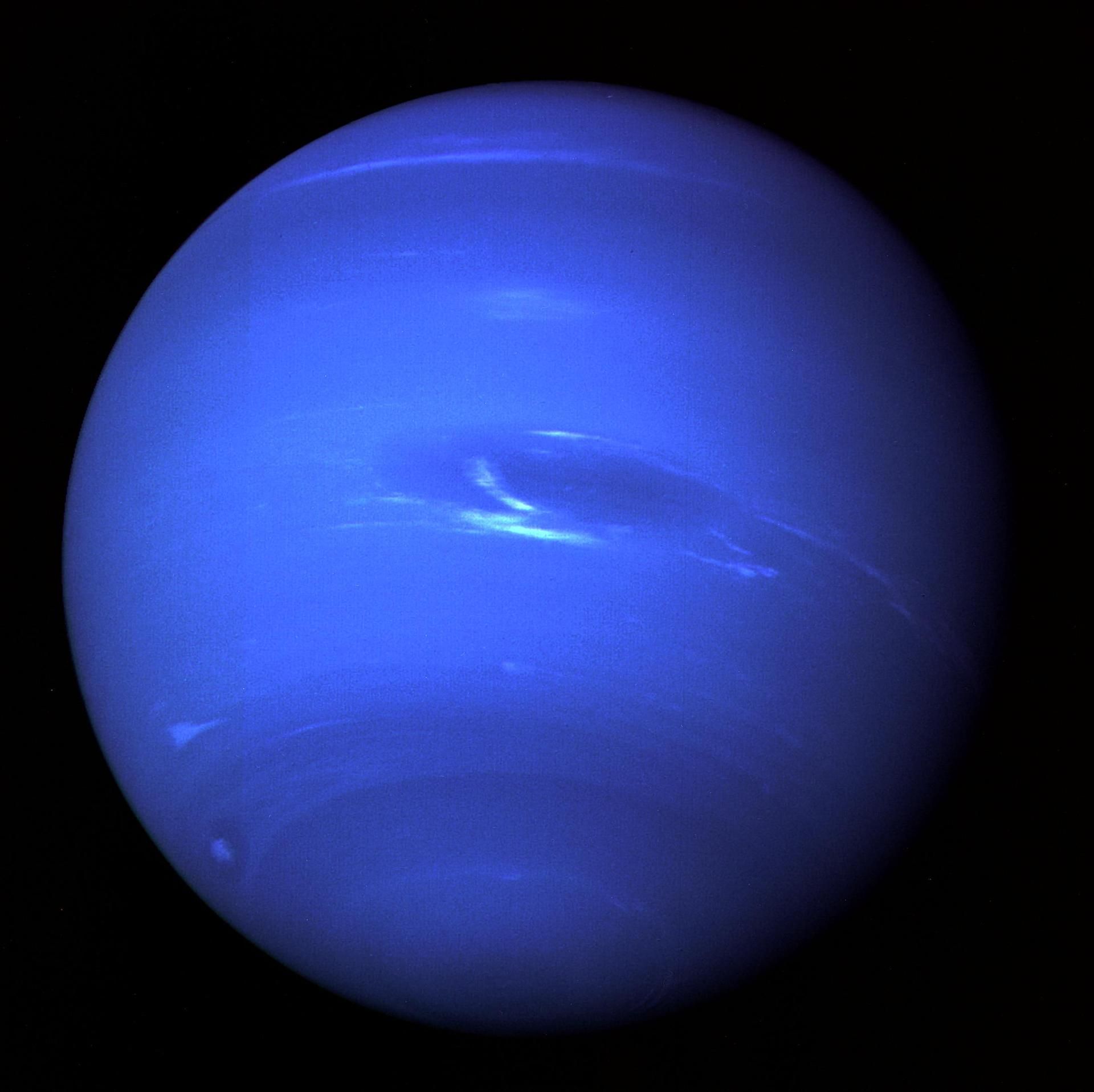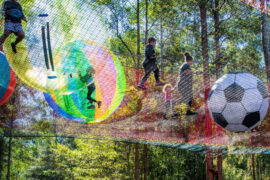Discovering Neptune: A Fascinating Journey for Kids and Parents Alike!
Hello, cosmic explorers! Are you ready to dive into the deep blue of our solar system? Welcome to a splashing adventure that takes you and your kiddos miles away, to one of the most intriguing and distant planets – Neptune. As parents, nurturing your child’s curiosity about the universe is a wonderful way to bond and learn together. So, grab your spaceship (or, let’s just say, your comfy reading chair) and let’s embark on this interstellar voyage to unravel the secrets of Neptune!
An Introduction to the Blue Ice Giant
Before we zoom off, let’s get to know Neptune a little better. This planet is often called an ‘Ice Giant’ due to its chilly temperatures and large size. With its dreamy blue appearance, Neptune captures the imagination of young minds effortlessly. But what makes it blue? What’s swirling in its atmosphere? We’ve got so much to uncover!
Neptune at a Glance
- Neptune’s Discovery: Let’s turn the pages of history to find out how this distant planet was first discovered.
- Neptune’s Features: From its fierce winds to its faint rings, there’s a world of wonders to discuss about the physical attributes of Neptune.
- Neptune’s Moons: Did you know Neptune has a family of moons, each with its own unique characteristics?
- Exploration Missions: Dive into the stories of spacecrafts that have visited this icy world.
Setting out on this cosmic journey not only sparks the imagination but also plants the seeds of interest in science, technology, engineering, and mathematics (STEM). So, whether you’ve got a pint-sized astronomer or an aspiring astronaut at home, learning about Neptune can be a phenomenal experience.
The Discovery of Neptune: A Twinkle in the Astronomers’ Eyes
Our story begins in the mid-19th century when a planet was sighted through the lens of mathematical calculations before any telescope caught a glimpse of it! It’s a tale of prediction, persistence, and finally, the thrill of discovery. As parents, you can use the story of Neptune’s discovery to teach your kids about the triumph of scientific perseverance.
Fun Facts to Share with Your Little Astronauts
- Neptune is the eighth planet from the sun and cannot be seen without a telescope because it’s so far away!
- The planet orbits our sun every 165 Earth years. Imagine having a birthday party just once in a lifetime!
- It’s named after the Roman god of the sea, which makes sense with its deep blue color, right?
Including fun facts like these in your family’s space talks makes the vast universe more relatable and engaging for children.
What Makes Neptune So Blu-tiful?
The stunning blue color of Neptune is one of its most captivating qualities, and it’s all thanks to a touch of methane in its atmosphere. Methane absorbs red light and reflects blue, giving Neptune its signature hue. Engage your children by asking them to imagine what it would be like to look up at a sky that wasn’t blue like ours but filled with the colors of Neptune!
Neptune’s Mighty Winds and Stormy Weather
Neptunian weather is truly out of this world! The planet boasts some of the strongest winds in our solar system, reaching speeds of up to 1,200 miles per hour. That’s faster than the speed of sound on Earth! Stories about this wild weather spark a sense of excitement and wonder. It also provides a great opportunity to compare and contrast weather patterns here on Earth with those on distant Neptune.
By embarking on this celestial journey with your child, you build not only knowledge but also memories that resonate with the wonders of our solar system. Stay tuned, fellow travelers, as we continue to delve into the enchanting mysteries of Neptune in our next installment. It’s truly a magnificent planet that waits to be explored further, offering limitless learning opportunities along the way!
Stay curious and keep exploring, dear parents and little astronauts. After all, Neptune, with its grand blue presence, is a reminder of the boundless curiosity and imagination that resides within us all. Let’s unlock its stories together, sharing in the joy of discovery and broadening our understanding of the vast universe we call home.

5 Things Parents Should Know in Preparing for Neptune’s Exploration
1. Gearing Up with Educational Tools and Resources
To set the stage for learning, it’s essential to have engaging materials. Think about leveraging books, documentaries, and educational apps that focus on Neptune and space exploration. There are also interactive online platforms and virtual reality experiences that can transport you right into the vastness of space, providing a unique perspective on the planet.
2. Encouraging Questions and Curiosity
Kids are naturally inquisitive, especially about the unknown. Encourage them to ask questions, no matter how out-of-this-world they may seem, and research the answers together. This not only teaches them about Neptune but also hones their critical thinking and research skills. Remember, there’s no such thing as a silly question when it comes to learning!
3. Understanding the Scale of the Solar System
Neptune’s distance from Earth can be hard to comprehend, so using models or apps that illustrate the solar system’s scale can be incredibly helpful. You could even create a fun family project where you build a scale model of the solar system in your backyard, using different sized balls to represent the planets and spacing them accurately. This hands-on activity makes understanding vast distances more tangible.
4. Preparing for Awe-Inspiring Discoveries
Neptune hosts dynamic weather phenomena and has the most robust winds in the solar system. It’s crucial to prepare your little ones for these discoveries by explaining in simple terms how weather works on Earth first. This sets a foundation, making it easier for them to grasp the more extreme conditions on Neptune.
5. Fostering a Space-Friendly Environment at Home
Create a stimulating learning environment by decorating with space-themed elements, such as posters of Neptune, the solar system, or even glow-in-the-dark stars for the ceiling. Such an environment not only excites the imagination but also serves as a constant visual reminder of the universe’s vastness and beauty.
Whether you’re discussing the fast winds of Neptune’s surface or creating a solar system scale model in your living room, each activity paves the way for memorable learning moments. Your child’s journey through the stars may begin with Neptune, but who knows? Perhaps one day, they’ll travel beyond the Ice Giants, reaching for the stars themselves.
In the meantime, keep enriching your family’s space knowledge. The universe is teeming with endless surprises, and Neptune is just one of the gems waiting for eager minds to explore. Prepare for liftoff into this grand cosmic quest, where the cold blue beauty of Neptune shines as a beacon of inspiration for budding astronomers and future adventurers!
For more great articles please see here. For more information see here
Disclaimer
The articles available via our website provide general information only and we strongly urge readers to exercise caution and conduct their own thorough research and fact-checking. The information presented should not be taken as absolute truth, and, to the maximum extent permitted by law, we will not be held liable for any inaccuracies or errors in the content. It is essential for individuals to independently verify and validate the information before making any decisions or taking any actions based on the articles.




